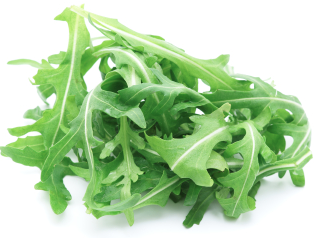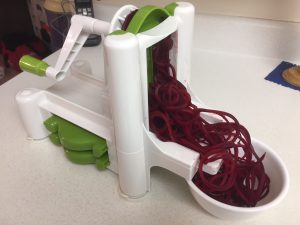Go Leafy Greens Go!!
Many natural foods have amazingly powerful ingredients whether these be vitamins, essential minerals, micro-nutrients and important enzymes, all of which the body needs to function optimally.
When it comes to finding quality foods which can make a difference to anyone who is trying to use Diet as a means of managing blood pressure issues, there is one group of foods which really rise up to the challenge! Do you know which one?
In a previous post I talked about the role of nitric oxide (NO) and how it helps the blood vessels relax, thus allowing easier circulation of blood around the body, which in turn helps to regulate blood pressure. The production of NO is stimulated by activity and exercise, and also as a result of ingesting nitrates in the food we eat.
And so, to answer my question above, the group of foods which provide the best source of nitrates for the body and, as a result the best best vegetables to lower blood pressure, are the GREEN LEAFY VEGETABLES
= = ▶︎ CLICK HERE TO READ MORE ABOUT NITRIC OXIDE AND BP ◀︎ = =
As we age the amount of nitric oxide begins to decline, and this combined with inactive lifestyle, too much stress and a modern day processed food/fast food diet which is nutritionally deficient and really injurious to health, are strong reasons why hypertension is becoming such a health issue nowadays.
The chart below presented by the South Denver Cardiology Department on Nitric Oxide shows how the ageing process affects levels of NO in the body, and underlines the importance of boosting NO levels in order to safeguard against further health complications which may arise:

THE NO SOLUTION: NITRIC OXIDE RICHARD COLLINS, MD SUSAN BUCKLEY, RDN, CDE SOUTH DENVER CARDIOLOGY ASSOCIATES
Some of the most Nitrate rich vegetables
Well since it is top of the chart listed above my first choice is ARUGULA: 
Also known as rocket salad and rucola, arugula is a great addition to any salad. It does have a pungent smell and slightly bitter taste but the baby arugula variety is crisp and refreshing. If you are not a fan of salads then it can be mixed into a veggie smoothie. Also, trying adding it to an omelette!
Just a word of caution: due to the prevalence of pesticide residues on conventionally farmed lettuce crops these days, it is probably best to seek out an organic brand of arugula to ensure you are not taking in unwanted toxins and heavy metals with your food.
Next up – the Unbeatable Beets
Beets are a must in your arsenal of nitrate rich foods. As the chart above shows Beets rank twice in the top 10 so that should speak for itself! And beets are so flexible. They can be cooked, spiralized into a salad, or a stir fry even, or used as a principal ingredient in a healthy vegetable beet smoothie.

spiralized beets
Click HERE for Nick’s Beet Smoothie recipe!
And it’s not just the root of the beet we are talking about. The beet greens are also extremely healthy and easily added into a salad.
So I always buy my beetroots with the stalks and leaves attached so that I can get the very most out of my beets.
The skin of the beet can often taste earthy and from my experience when adding beets into a smoothie, it is better to peel the beet skin first and put it aside.
Anyhow, beets and beet smoothies/juice are so healthy for your body and there have been many studies focussed solely on the blood pressure lowering health benefits of beets.
Microgreens can really pack a health punch
One group of vegetables which are growing in popularity for their overall health benefits are Microgreens. Basically these foods are very healthy, because in their juvenile state they contain concentrated doses of antioxidants and phytonutrients, both of which are great for fighting diseases and promoting healing. Microgreens are basically the seedlings of vegetables and herbs. For example, if we take just one example – Red Clover Sprouts and look at the list of nutrients, we will see that this form of the plant or herb is just packed full of goodness:
Red Clover Microgreens contain:
- Anti-oxidants
- Estrogen
- Isoflavones
- Amino-Acids
- Protein
- Vitamin A (Retinol)
- Vitamin B1 (Thiamine)
-
Vitamin B2 (Riboflavin)
Red Clover sprouts
- Vitamin B3 (Niacin)
- Vitamin B5 (Pantothenic Acid)
- Vitamin B6 (Pyridoxine)
- Vitamin B12 (Cobalamin)
- Vitamin C (Ascorbic Acid)
- Vitamin E (Tocopherol)
- Vitamin K (Phylloquinone)
- Vitamin P (Bioflavonoids)
- Chromium
- Copper
- Potassium
- Zinc
- Iron
- Phosphorus
- Magnesium
- Calcium
- Selenium
According to Nature’s Roots a company which specializes in growing microgreens, Red Clover sprouts can amongst other things: “help lower blood pressure, purify the blood, relax the nervous system and give a boost to the immune system”
The beauty with microgreens is that you can get mixed packages which give you the benefits of more than one variety.
I actually sprout my own micro-greens – it only takes 4-6 days and voilà fresh microgreens!
These can be added to salads, or as part of a sandwich filler.
The sprouts will keep for 2 to 3 days in the fridge, but should be eaten as soon as possible to get the maximum nutritional value from them and to avoid any danger of them growing mould…
Nick’s BP Friendly Salad Recipe
Once I finally realized just how important it was to fuel my body with nutritionally healthy foods, I made it a habit to include a green leafy salad with my main meal of the day each and every day.
As time has gone on I have found more and more healthy ingredients to add to what started as a very simple garden salad, and which include many of the items which I have discussed here in my blog.
The photo below shows the type of salad I now eat and includes the following heart and blood pressure healthy foods:
- Arugula
- Beet tops
- Baby mixed lettuce
- Celery
- Spinach
- Beet sauerkraut
- Avocados
- Blueberries or blackberries
- Cherry tomatoes
- Shredded carrot
- Salad dressing with virgin olive oil, Dijon mustard, pure maple syrup, lemon juice, red wine vinegar, sea salt and pepper.
… and accompanied by a glass of refreshing Hibiscus Tea – served warm or chilled.
Click HERE for Nick’s BP Friendly Salad Recipe
So, in conclusion I cannot say enough about the importance of including the Green Leafy Vegetables in your daily diet as another way of giving your body the healthy nutrition it needs to function optimally. And the high nitrate content of these ingredients will help your body generate the all important Nitric Oxide it needs to keep your blood vessels supple, your blood circulating freely and your blood pressure in the normal range.
Your Turn – what do you think about using Green Leafy Veggies in your diet to help manage your blood pressure? Please feel free to add a comment below.
